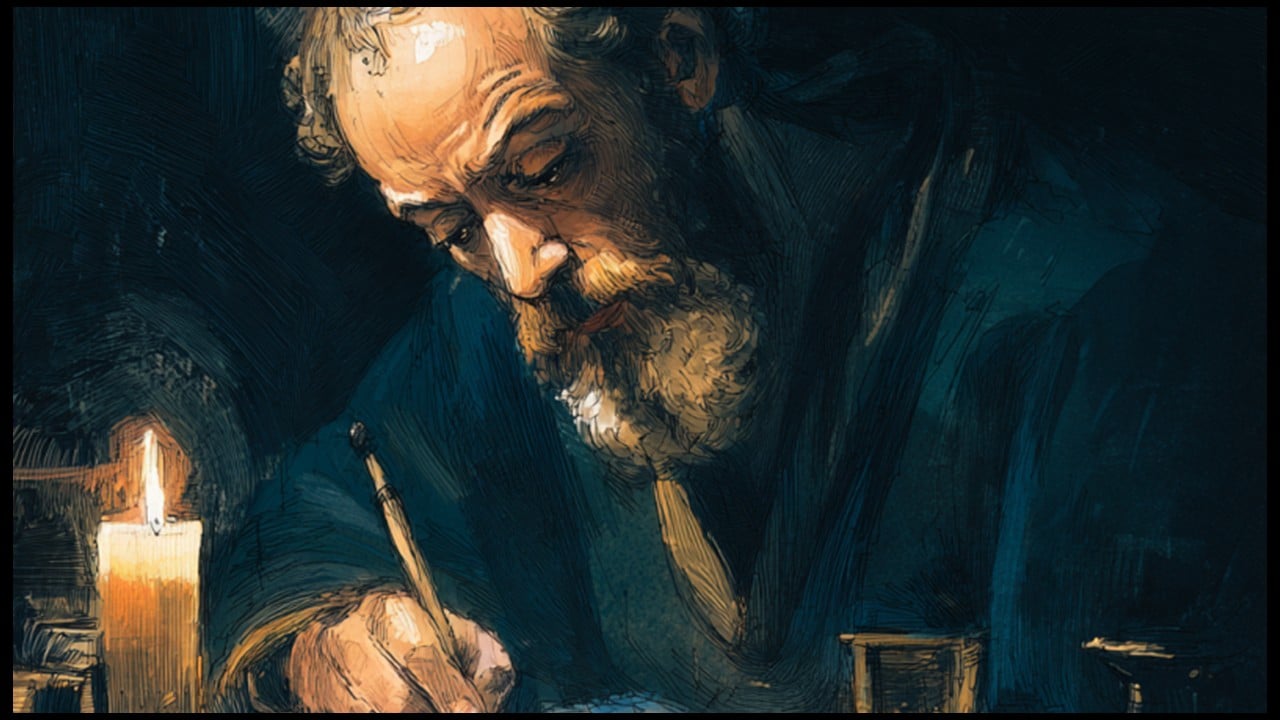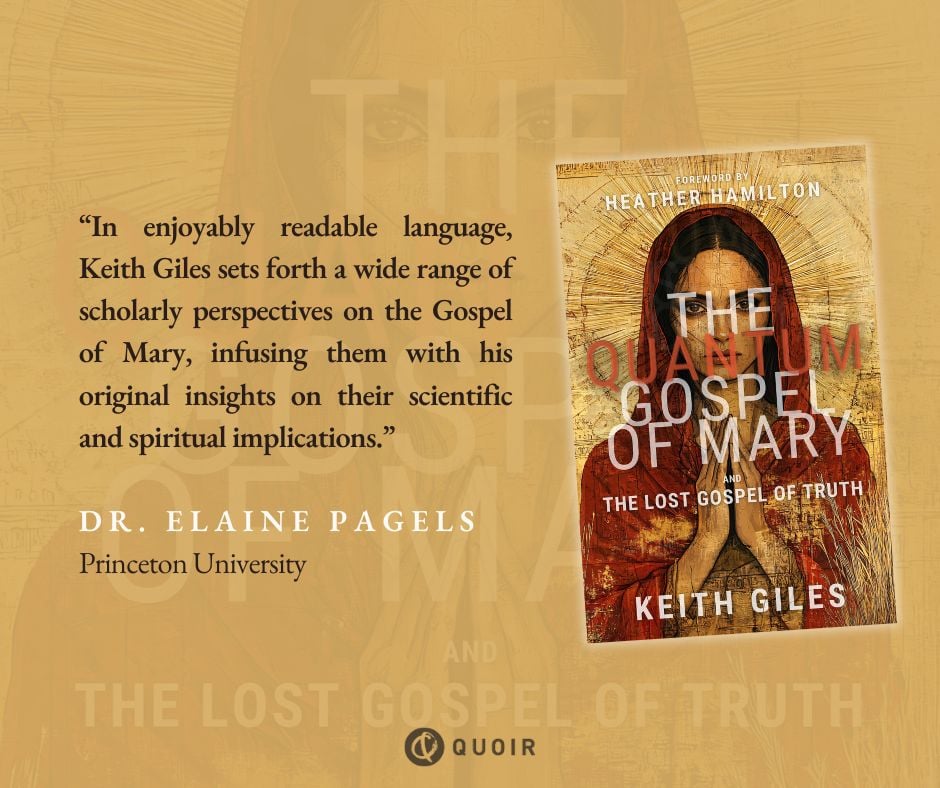
Those who say we are not to allegorize the Old Testament “missed the memo” from the New Testament which says that is exactly what we ARE to do— allegorize the Old Testament with the love and light of Christ.
The Apostle Paul LITERALLY (and ironically) told us to ALLEGORIZE, and showed us how we could ALLEGORIZE the Old Testament “letter” into the New Testament “Spirit.”
“Allegory is language that says one thing and means either something MORE than what it says or something OTHER than what it says.” (Theologian R.A. Norris, in his article on “Allegory” in THE WESTMINSTER HANDBOOK TO ORIGEN)
Allegory has been defined by Bishop Marsh, in accordance with its etymology, as “a representation of one thing which is intended to excite the representation of another thing.”
So, when allegorizing the Old Testament, the “another thing” is always some aspect of Jesus and His coming kingdom. All such allegories find their rest in Christ.
This is why I have coined the term “Christo-allegory” to describe the process of allegorizing Old Testament Scriptures into Christological meaning.
The very first usage by a Christian of the concept of allegory was not some New Age kook, or some modern liberal theologian (as many seem to inexplicably think).
It was the apostle Paul who first used and modeled the term in its Christian application. So, if we have a problem with Old Testament allegory, our problem is with Paul, Peter, and the early church fathers, not to mention Jesus. But let’s start with Paul’s explicit usage the term “allegory.”
“Now THIS (the Old Testament narrative of Sarah and Hagar) may be interpreted ALLEGORICALLY (Greek “allegoria”): these women are two covenants. One is from Mount Sinai, bearing children for slavery; she is Hagar. Now Hagar is Mount Sinai in Arabia; she corresponds to the present Jerusalem, for she is in slavery with her children. But the Jerusalem above is free, and she is our mother.
“For it is written, ‘Rejoice, O barren one who does not bear; break forth and cry aloud, you who are not in labor! For the children of the desolate one will be more than those of the one who has a husband.’ Now you, brothers, like Isaac, are children of promise. But just as at that time he who was born according to the flesh persecuted him who was born according to the Spirit, so also it is now.
“But what does the Scripture say? “Cast out the slave woman and her son, for the son of the slave woman shall not inherit with the son of the free woman.”
So, brothers, we are not children of the slave but of the free woman.” – Galatians 4:24-31
We mustn’t miss the importance of what Paul did here. Nobody for a second thinks the Mosaic writer’s original intent or immediate context, when writing this narrative a thousand years earlier, meant it ever to be read as an allegory for the Old and New Covenants.
As Patristic Scholar David Bentley Hart recently said:
“Really, when did Paul not allegorize the Old Testament? As should be obvious, Paul frequently allegorizes Hebrew scripture; the ‘spiritual reading’ of scripture typical of the Church Fathers of the early centuries was not their invention, nor just something borrowed from pagan culture, but was already a widely accepted hermeneutical practice among Jewish scholars. So it is not anachronistic to read Paul here as saying that the stories he is repeating are not accurate historical accounts of actual events, but allegorical tales composed for the edification of readers….. Again, one should not assume that Paul does not mean precisely what he says, and takes the tale to be essentially (not merely secondarily) allegorical. His interpretative habits are rarely literalist.”
[The New Testament: A Translation (2017), David Bentley Hart, pg. 336, 376].
I am convinced that when Peter said that some of Paul’s writings were difficult to grasp, at least one thing to which he was referring was his heavy use of allegory in updating Old Testament imagery with the better light of the New Testament.
When Paul read the Old Testament:
— EXTERNAL circumcision became “nothing,”
— EXTERNAL temple descriptions became entirely symbolic,
— EXTERNAL animal sacrifices became meaningless rituals,
— EXTERNAL narratives of Israel’s journey became allegories of Christ.
Paul used Scripture to go INTERNAL:
— INTERNAL heart-circumcision now became “everything,”
— INTERNAL temple dynamics now say WE are the living temples of God,
— INTERNAL sacrifices of self-will are what WE offer to God’s purging fire,
— INTERNAL human processes are now explained by reinterpreting Israel’s history as allegorical archetypes of our human condition today, here, and now.
When the apostle Paul cited Old Testament Scriptures, he usually expanded them to either mean something MORE or something OTHER than what they literally said.
Paul displayed this dynamic when he rescued the concept of circumcision by transfiguring it FROM an empty and meaningless external Old Testament ritual TO the New Testament reality of the internal spiritual transformation of the heart.
“Circumcision is nothing, and uncircumcision is nothing, but the keeping of the commandments of God.” 1 Cor. 7:19.
“For in Jesus Christ neither circumcision availeth any thing, nor uncircumcision; but faith which works by love.” Gal. 5:6.
“But he is a Jew, who is one inwardly; and circumcision is that of the heart, in the spirit, and not in the letter; whose praise is not of men, but of God.” Rom. 2:29.
Below are other New Testament passages using this same allegorical dynamic.
Galatians 4:21-31 (The “allegorical” reading of the Old Testament here is both modeled and approved by Paul, as he completely reinterprets the meaning of the story of Abraham, Isaac, Hagar and Ishmael to refer rather to the current relationship between Old and New Covenants).
1 Corinthians 10:1-11 (Paul “allegorizes” the whole Exodus journey of Israel as a type of the Christian walk, reading it non-literally in other words).
2 Corinthians 3:6-18 (Paul here says we are to be “ministers of the New Covenant, not of the letter, for the LETTER KILLS, but of the Spirit, for the Spirit gives life,” and that Moses, as a symbol of Old Testament understanding, “veiled” the true meaning of OT Scripture by reading it with blind literalism).
Hebrews 8:1-5 (The voluminous OT passages about the “tabernacle” and “priesthood” and “sacrifices” are all “shadows of heavenly things” rather than literal realities on earth).
Hebrews 10:1 (Here, we see the law itself is to be read allegorically: “the law, having a shadow of good things to come, and NOT the very image of the things”).
Colossians 2:17 (The OT festivals, holy days and dietary laws are all symbolic prefigurements called “shadows” of “the body of Christ” to come, again not the literal thing itself but a prophetic allegory of the Kingdom of God).
Matthew 11:13 (“ALL the OT law and prophets prophesied until John the Baptist,” the clear implication being that the OT is one big prophetic allegory of Christ to come).
Luke 11:27 (“ALL” the OT Scriptures, when properly read, speak ONLY of Christ).
Paul also transformed the Sabbath from a “letter of the law” weekly ritual to an ongoing lifestyle state of being. Heb. 4:1-11.
Paul (and Peter)both renovated Old Testament dietary laws by integrating faith and thanksgiving into the true spiritual diet. (Acts. 11:5-10; Rom. 14:1-23; 1 Tim. 4:3-4).
In 1 Cor. 14:21, Paul took an Old Testament passage which on its face had nothing to do with New Testament tongues (Is. 28:11-12), and transformed, enhanced and enriched it to make it a prophetic passage for the spiritual gift of tongues.
In Acts 2, Peter did the same thing in taking Joel 2:28-29 and excavating, renovating and elevating it to prophesy the coming of the Holy Spirit at Pentecost. It is beyond dispute that the Old Testament scholars of their day would have accused Paul and Peter (and the other New Testament writers) of butchering and misusing scriptures. They didn’t see that the Old Testament scriptures needed to be transformed, enhanced and enriched.
But, as much as Paul loved and modeled Old Testament allegory (“and really when did Paul not allegorize”— Patristic Scholar David Bentley Hart), it was Jesus who FIRST modeled the idea.
While Paul is readily seen as an allegorist, Jesus Himself is frequently overlooked in this area.
In point of fact, Jesus frequently allegorized the Old Testament. Using key imagery from Old Testament passages which were ONLY seen as literal, He would then usurp their literal meaning into an allegorical application toward Himself.
He referred to Himself ALLEGORICALLY as the Temple of God (John 2:19-22), the true manna from heaven (John 6:50), Jacob’s supernatural ladder between heaven and earth (John 1:51), the sign of Jonah (Matthew 12:38-40), the great shepherd of Psalm 23 (John 10:11), etc.
God revealed Himself as the great “I Am” In Exodus 3 with Moses at the Burning Bush. Jesus refers to Himself as the “I Am” on at least eight separate occasions, thus now personifying the Burning Bush allegory. In each of those eight occasions, the wording in the original Greek is the same. Jesus refers to Himself not simply as “I am” but literally as “I, I Am”. The phrase could be legitimately translated as “I and I alone” or “I and no one else”. The words He chose are emphatic.
The Emmaus Road experience, in fact, gives us express commission to Christo-allegorize Old Testament Scripture.
“And beginning from Moses and from all the prophets, He (Christ) INTERPRETED to them in ALL THE SCRIPTURES the things concerning himself….And their eyes were opened, and they knew him; and he vanished out of their sight. And they said one to another, Was not our heart burning within us, while he spake to us in the way, while he opened to us the scriptures?…. And he said unto them , These are the words which I spake unto you , while I was yet with you , that all things must be fulfilled , which were written in the law of Moses , and in the prophets , and in the psalms , concerning me . Then opened He their understanding , that they might understand the scriptures….” (Luke 24:26-27, 31-32, 44-45)
Now, we know that Jesus is LITERALLY nowhere explicitly to be found by name in the Old Testament. But, ALLEGORICALLY, He is everywhere to be found.
Jesus allegorized the Scriptures to these two highly blessed disciples. And their hearts burned within them as they finally understood the true import of the Old Testament. And so can ours as we allow the Spirit to quicken the treasure trove of allegorical/Christological subtext of Scripture.
**

The new book, “The Quantum Gospel of Mary and the Lost Gospel of Truth”is now available on Amazon.The book from Keith Giles, “The Quantum Sayings of Jesus: Decoding the Lost Gospel of Thomas” is available now on Amazon. Order HERE>Keith Giles is the best-selling author of the Jesus Un series. He has been interviewed on CNN with Anderson Cooper, Coast to Coast Radio with George Noory, USA Today, BuzzFeed, and John Fugelsang’s “Tell Me Everything.”He co-hosts The Heretic Happy Hour Podcastand his solo podcast, Second Cup With Keith which are both available on Spotify, Amazon, Apple, Podbean or wherever you find great podcasts.












